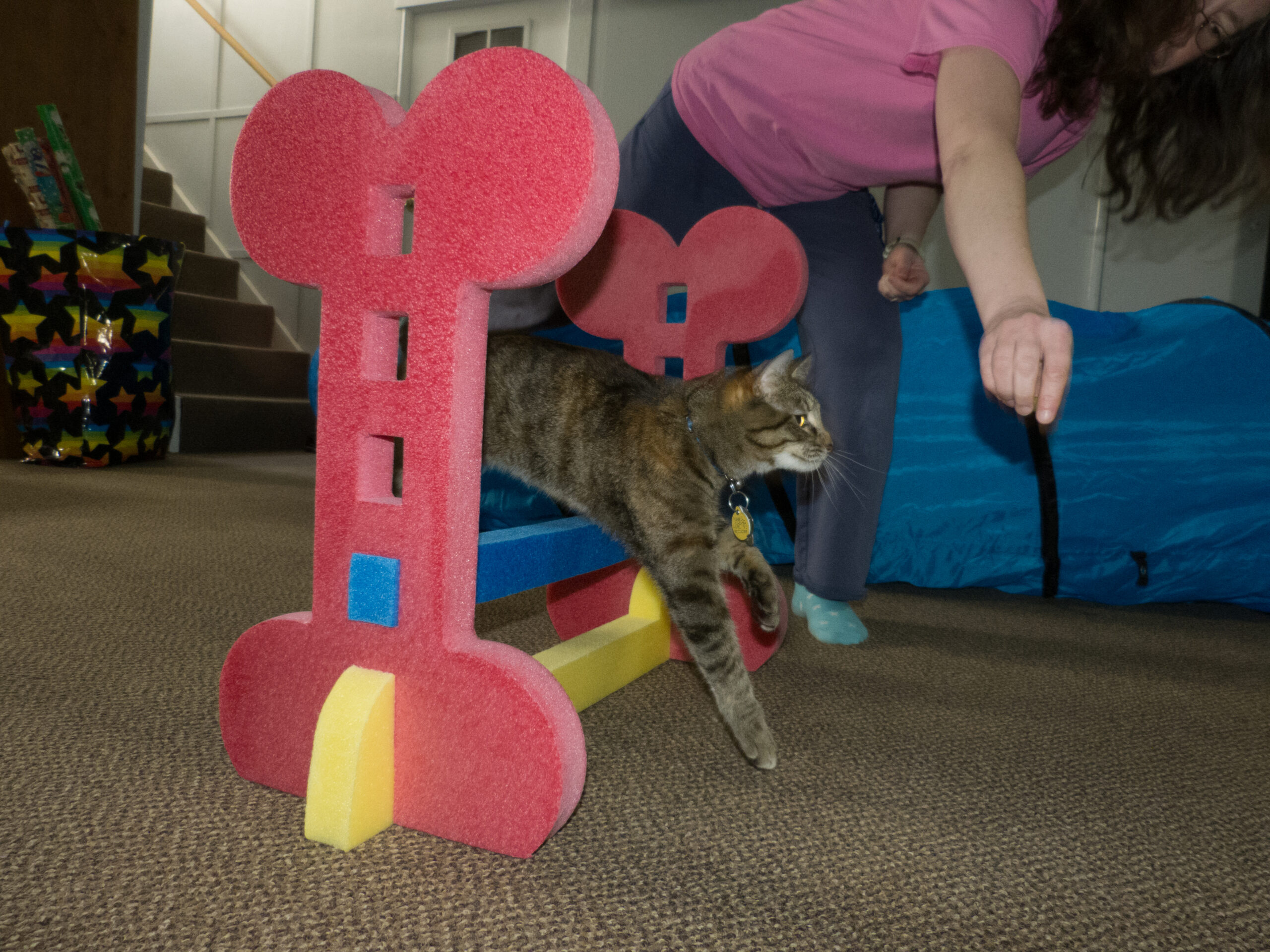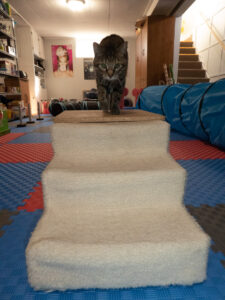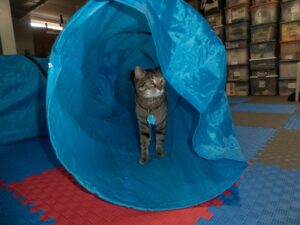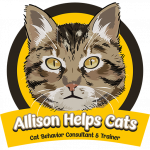Pets and Their People Blog
Agility for Cats!? A Cat Behavior Consultant Answers What, Why and How
Our three cats coax us daily for their agility time in our basement! Agility is also a sport that I have introduced to more than one of our foster kittens and taught to more than one of my clients and/or students.
What is Agility?
It’s a sport whereby a handler directs a cat through a preset obstacle course. Modeled after the equestrian sport of show jumping, and adapted first by the dog world, agility is designed to demonstrate coordination, intelligence, beauty of movement, training, and speed. In competition, cats are judged by accuracy and time, and lures besides food are allowed. For non-competition, treats also work as lures.

Why Teach Agility to Your Cat(s)?
- Foremost, it is fun! My cats and I look forward to running daily obstacle courses.
- Also, by the very fact that agility is a team sport, it strengthens the bond between handler and cat. My cats teach me how to best train and interact with them.
- Agility has physical and cognitive benefits too. It gets everyone off the couch, burns calories, and builds muscles.
- Agility is especially beneficial to active cats. Instead of directing their energy on another, perhaps uninterested cat, they can channel their energy into agility.
- By drawing on environmental memory, agility helps cats adapt more easily to new situations. In this way, agility is also useful for shy and fearful cats, because regular problem-solving helps build their confidence.
- Finally, agility uses cats’ natural abilities, such as their visual acuity, jumping and sprinting skills, hunting instincts, and problem-solving abilities.
How to Create an Obstacle Course

The agility obstacles which I use with our cats include: hoop or bar jump, tunnel, cat walk, weaves, and table. A catwalk includes two ramps with a flat plank in the middle. Weaves are upright poles in a straight line. A table is an elevated platform onto which the cat must jump and pause.
All of these obstacles can be purchased commercially or made yourself. Jumps can be created with any long thin object, such as a broomstick, supported on each end by objects of equal height, tunnels out of cardboard boxes or most any container object which the top and bottom can be removed, cat walks from a board placed across two pet stairs, and weaves from water bottles or traffic cones.
Other commonly used obstacles in agility include the A-Frame and a teeter-totter. An A-Frame consists of two wide planks that are propped up at an angle, creating an “A” shape. You can create an A-Frame by using two slanted cat scratchers set up back-to-back. A teeter is a more complex do-it-yourself project involving a board and a round piece of wood.
How Do You Teach Agility to Cats?
Start with jumps. Practice them over and over until your cat is fluid with them.
Then teach your cat how to go through a tunnel, and when he or she has that down, move on to the next obstacle.

When your cat is fluid with several obstacles, you can begin teaching your cat how to perform a sequence by starting with two obstacles. Set up a jump followed by a tunnel, then lure your cat over the jump and through the tunnel.
When your cat can do two obstacles fluidly, move on to three, then four, until he or she can handle all of your obstacles in a sequence. Be sure to change the course regularly to keep everyone’s interest.
Need Help?
If you get stuck, you can check out my demos on YouTube or you can hire me to give you personal lessons via Zoom. If you want to take cat agility to the next step, check out the Cat Fanciers’ Association’s Show and Event Calendar to see if there are any competitions near you.
About the Author
 Allison Hunter-Frederick is a Cat Behavior Consultant, Trainer, and Educator. She is also the mother of three furkids and several revolving foster cats, a host mom to an international student, and the wife of a supportive husband. Through her business Allison Helps Cats LLC, she uses her knowledge of cats to help cat owners and animal shelters with their cat behavior needs. She has taught classes in cat agility. Her three cats, which include a former feral, love agility.
Allison Hunter-Frederick is a Cat Behavior Consultant, Trainer, and Educator. She is also the mother of three furkids and several revolving foster cats, a host mom to an international student, and the wife of a supportive husband. Through her business Allison Helps Cats LLC, she uses her knowledge of cats to help cat owners and animal shelters with their cat behavior needs. She has taught classes in cat agility. Her three cats, which include a former feral, love agility.
